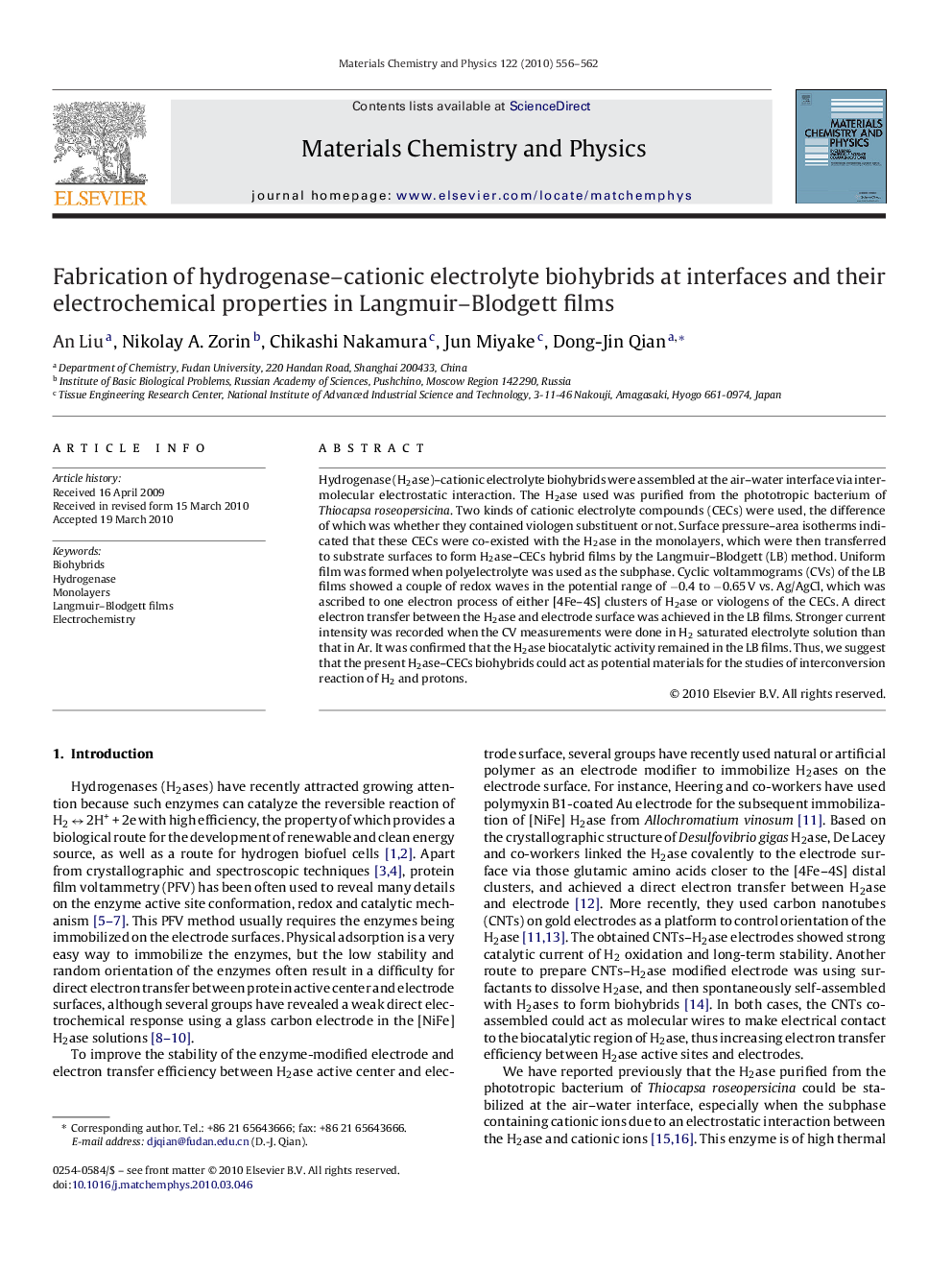| Article ID | Journal | Published Year | Pages | File Type |
|---|---|---|---|---|
| 1525302 | Materials Chemistry and Physics | 2010 | 7 Pages |
Abstract
Hydrogenase (H2ase)-cationic electrolyte biohybrids were assembled at the air-water interface via intermolecular electrostatic interaction. The H2ase used was purified from the phototropic bacterium of Thiocapsa roseopersicina. Two kinds of cationic electrolyte compounds (CECs) were used, the difference of which was whether they contained viologen substituent or not. Surface pressure-area isotherms indicated that these CECs were co-existed with the H2ase in the monolayers, which were then transferred to substrate surfaces to form H2ase-CECs hybrid films by the Langmuir-Blodgett (LB) method. Uniform film was formed when polyelectrolyte was used as the subphase. Cyclic voltammograms (CVs) of the LB films showed a couple of redox waves in the potential range of â0.4 to â0.65Â V vs. Ag/AgCl, which was ascribed to one electron process of either [4Fe-4S] clusters of H2ase or viologens of the CECs. A direct electron transfer between the H2ase and electrode surface was achieved in the LB films. Stronger current intensity was recorded when the CV measurements were done in H2 saturated electrolyte solution than that in Ar. It was confirmed that the H2ase biocatalytic activity remained in the LB films. Thus, we suggest that the present H2ase-CECs biohybrids could act as potential materials for the studies of interconversion reaction of H2 and protons.
Related Topics
Physical Sciences and Engineering
Materials Science
Electronic, Optical and Magnetic Materials
Authors
An Liu, Nikolay A. Zorin, Chikashi Nakamura, Jun Miyake, Dong-Jin Qian,
